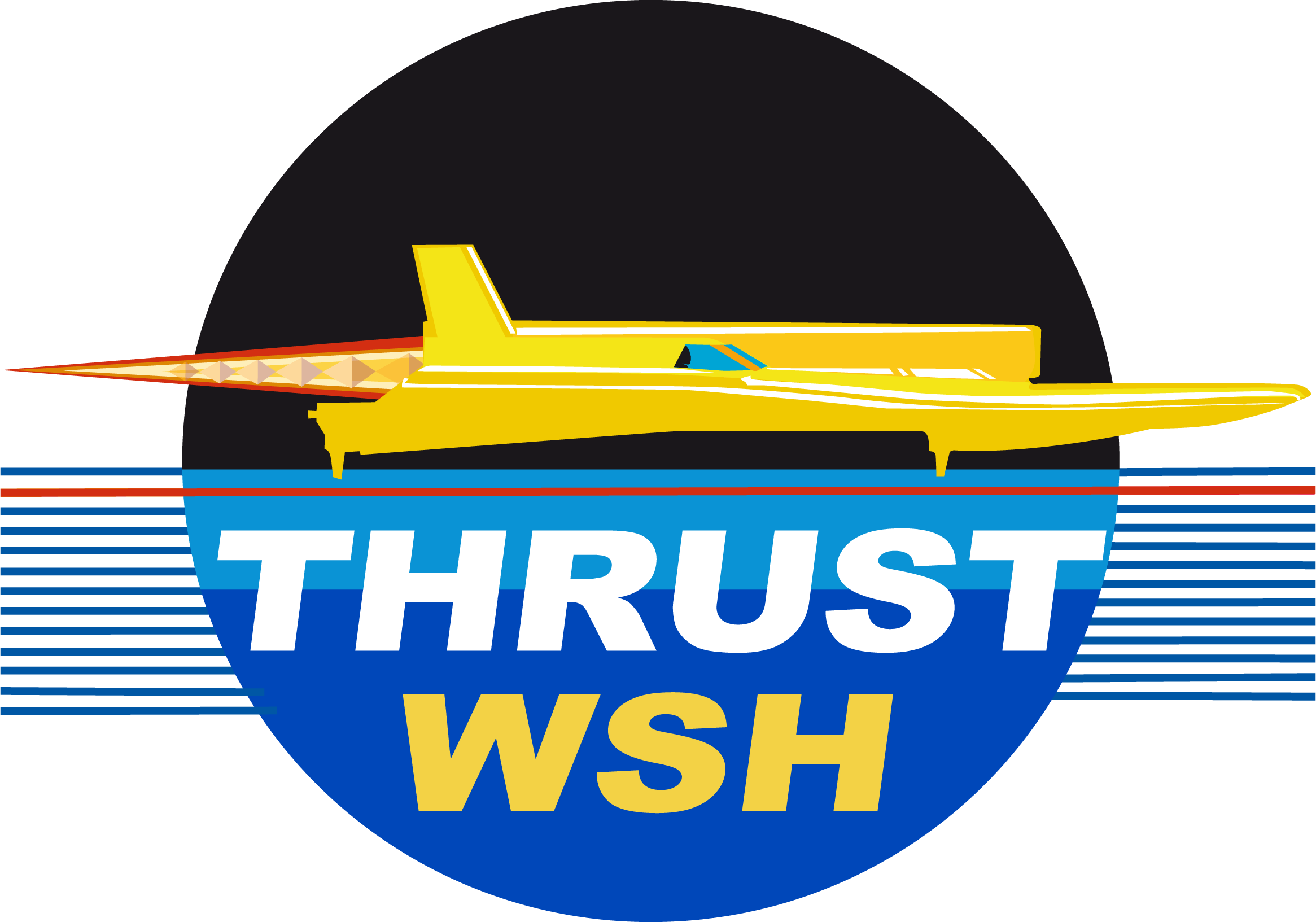WHY HYDROFOILS?
At normal boat speeds hydrofoils can reduce drag by lifting the hull clear of the water. This eliminates wave-making drag and reduces the surface area in contact with the water, so decreasing viscous (or skin-friction) drag as well. Decreasing drag means going faster with the same power.
A hydroplane skimming across the surface has lower drag, but it can be upset by the slightest wavelet. The water surface is dangerous, destructive and uncomfortable at high speed. Hydrofoils lift the boat above the surface, deriving their lift from undisturbed water lower down.
At 450 mph, control is just as important as speed. If you lose control, the record attempt will be a disaster, however fast your potential velocity. Hydrofoils can be controlled so they lift only as much as is required at any given moment.
The thrust of a jet engine tends to push the bow underwater. but hydrofoils can be adjusted to keep the boat level, even before lift-off.
[Picture of Thrust WSH showing hydrofoils with caption “The foils do not have to be big if you go fast enough”]
WHY NOT HYDROFOILS?
With these advantages, why has the World Water Speed record only once been held by a hydrofoil craft (Hydrodrome IV in 1919 at 70.86 mph) and why has no one successfully challenged for the record on hydrofoils since then?
Although compared to a regular planing hull, hydrofoils reduce drag, high speed hydroplanes already have reduced drag because they have only a tiny area in contact with the surface. For them pushing hydrofoils through the water means adding considerable drag. The extra drag arises because planing shoes are only wetted on the bottom. while hydrofoils are wetted on the top surface as well. There is also drag from the strut that holds the hydrofoil, and additional “interference drag” between the two.
But the main reason why hydrofoils aren’t used for breaking records is cavitation.
THE CAVITATION THRESHOLD
Up until now, hydrofoils have been limited to about 70 miles an hour, at which speed the water vapourises due to the extremely low pressure above the hydrofoil.
This kills lift and damages the hydrofoils due to vapour bubbles imploding on the hydrofoil surface.
A further problem is that hydrofoils designed to operate beyond the cavitation threshold are not capable of generating the lift required to take off.
The Thrust WSH team believe they can resolve this conundrum and are confident the boat will run at speeds never before achieved on hydrofoils.
[Picture of section of hydrofoil showing cavitation bubble]
CROSSING THE THRESHOLD
Similar to the sound barrier that posed a major problem for aircraft designers before the middle of the 20th century, to date no boat has ever gone faster than the cavitation threshold and maintained sustained stable super-cavitating flight.
The hydrofoils of Thrust have been designed to run while cavitating, with the destructive condensation of the water vapour imploding safely behind the hydrofoil itself.
Details of the hydrofoil design will be not published before real-life trials have confirmed the result of computer fluid dynamic simulations, which indicate that Thrust WSH will be able to cross the cavitation threshold.
WHAT NEXT?
We are confident that Thrust WSH will become the first boat ever to demonstrate stable sustained super-cavitating flight.
Just as Concorde changed supersonic flight from being a pioneering technological achievement to being a routine, inconsequential event, so in future supercavitating hydrofoils could allow fast passenger ferries to go from their current speed of around 40 mph (little more than Turbinia achieved in 1897) to around 200 miles per hour or even faster. Join us in this exciting, unprecedented adventure, venturing where no-one has ever been before.
